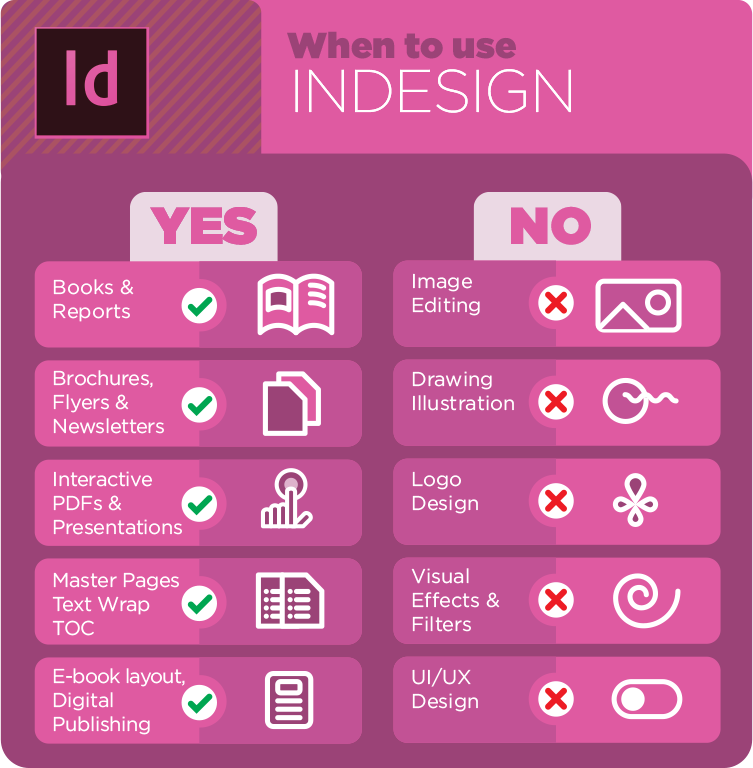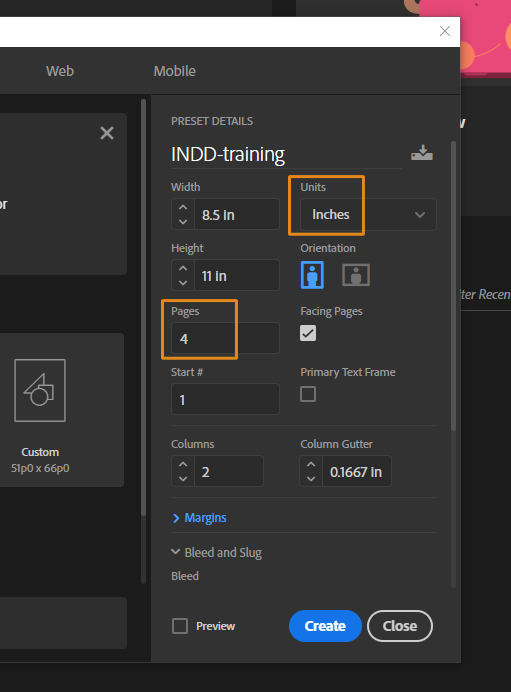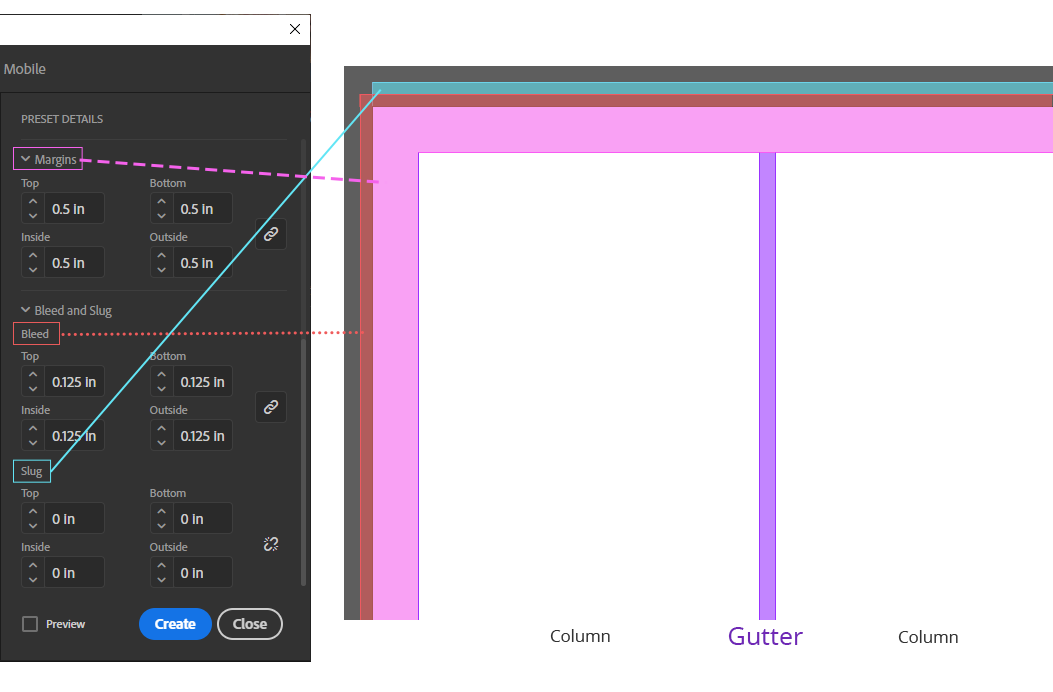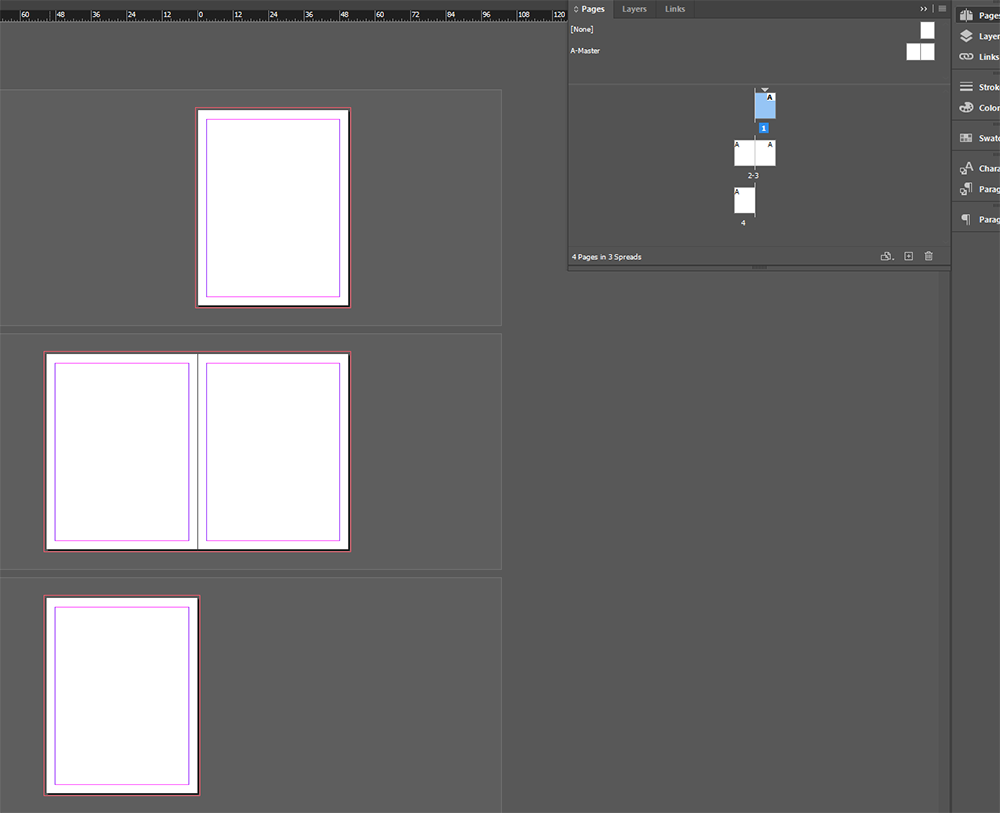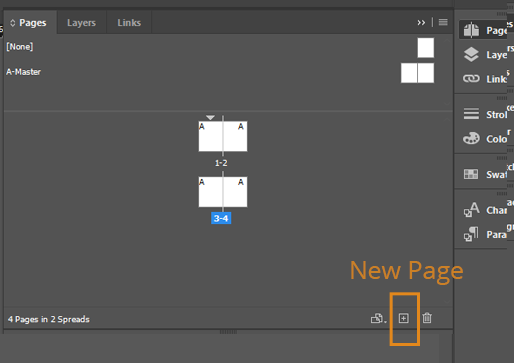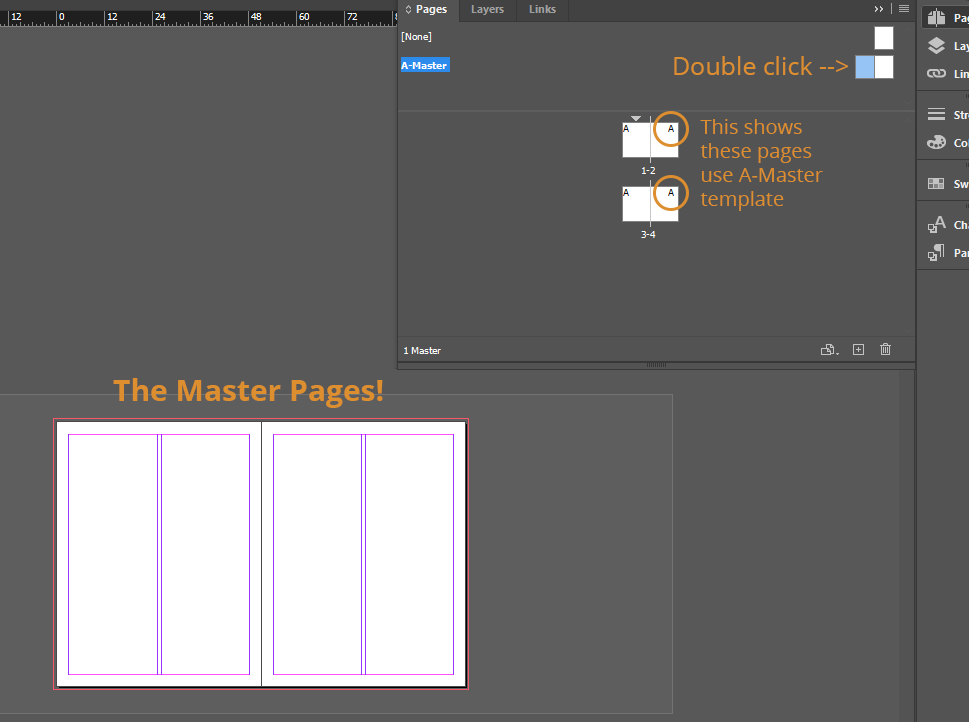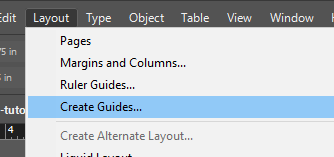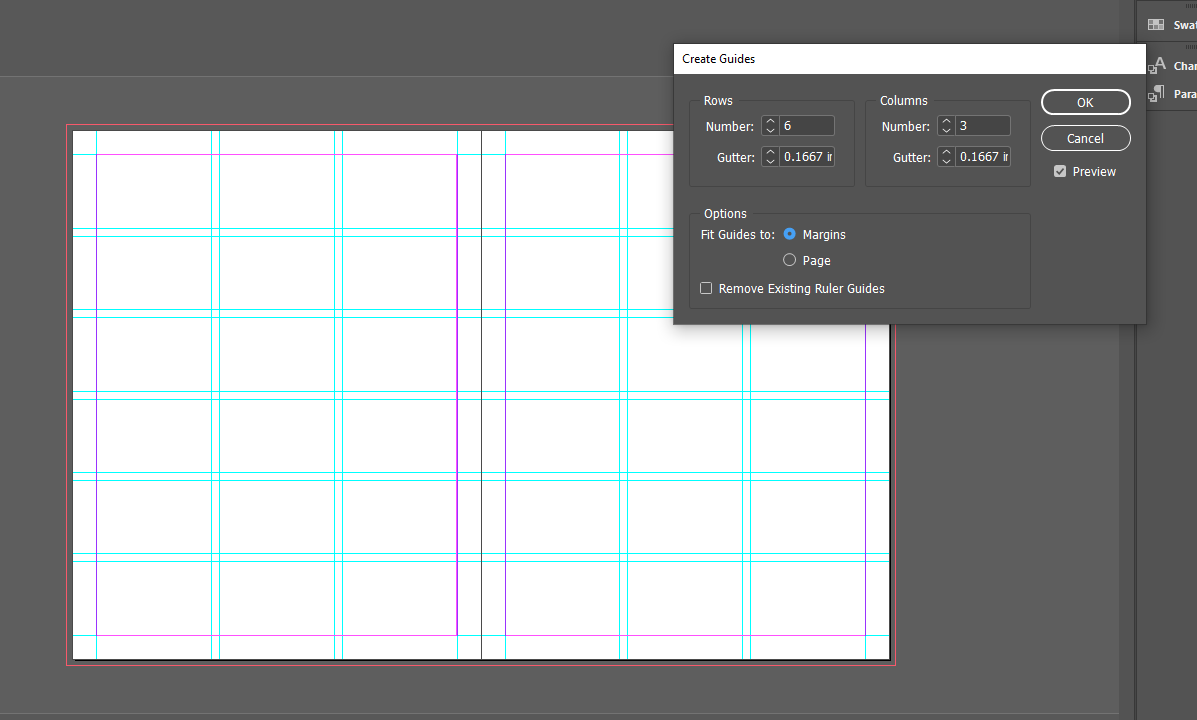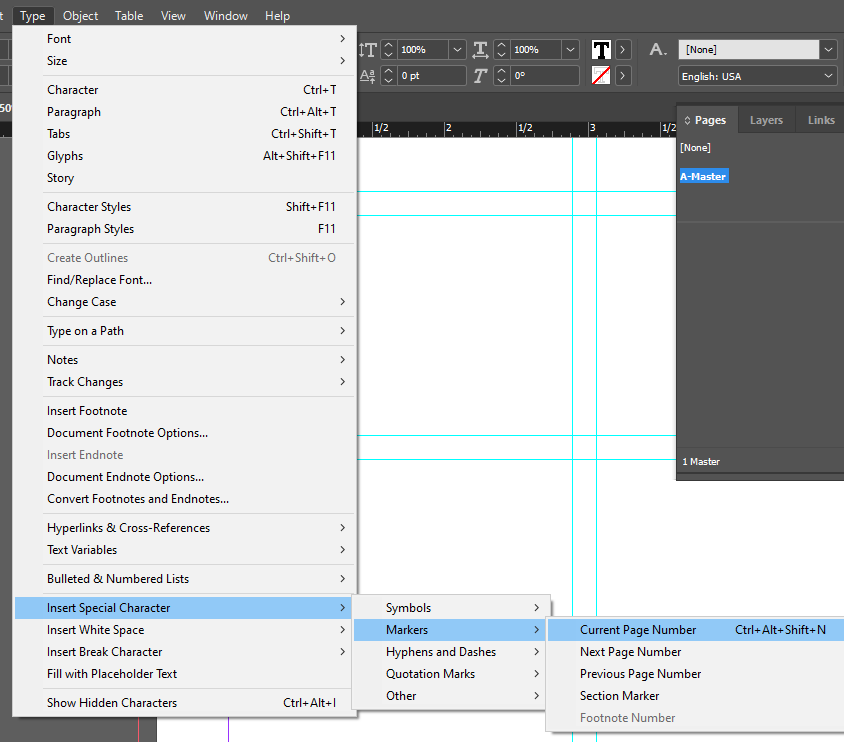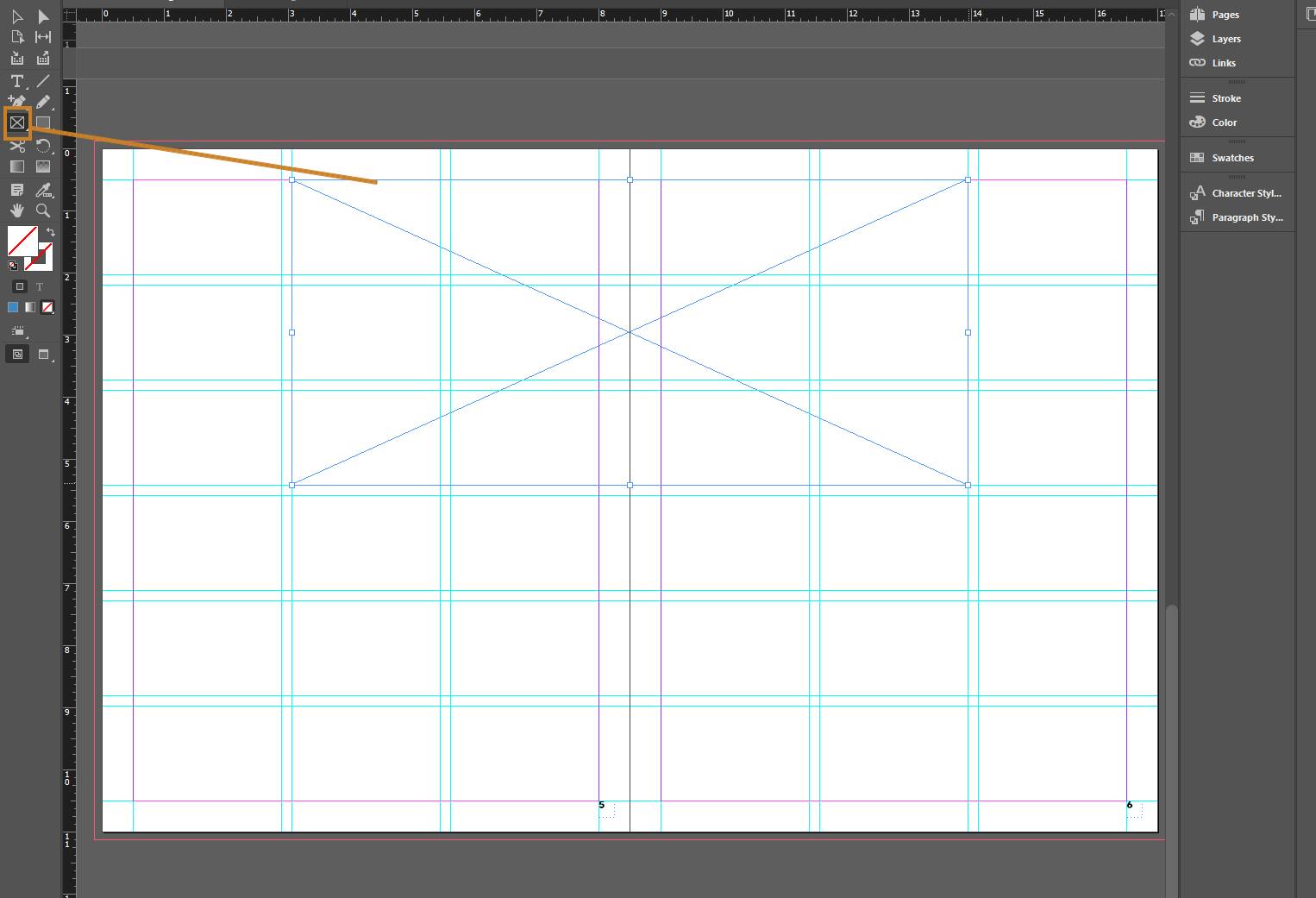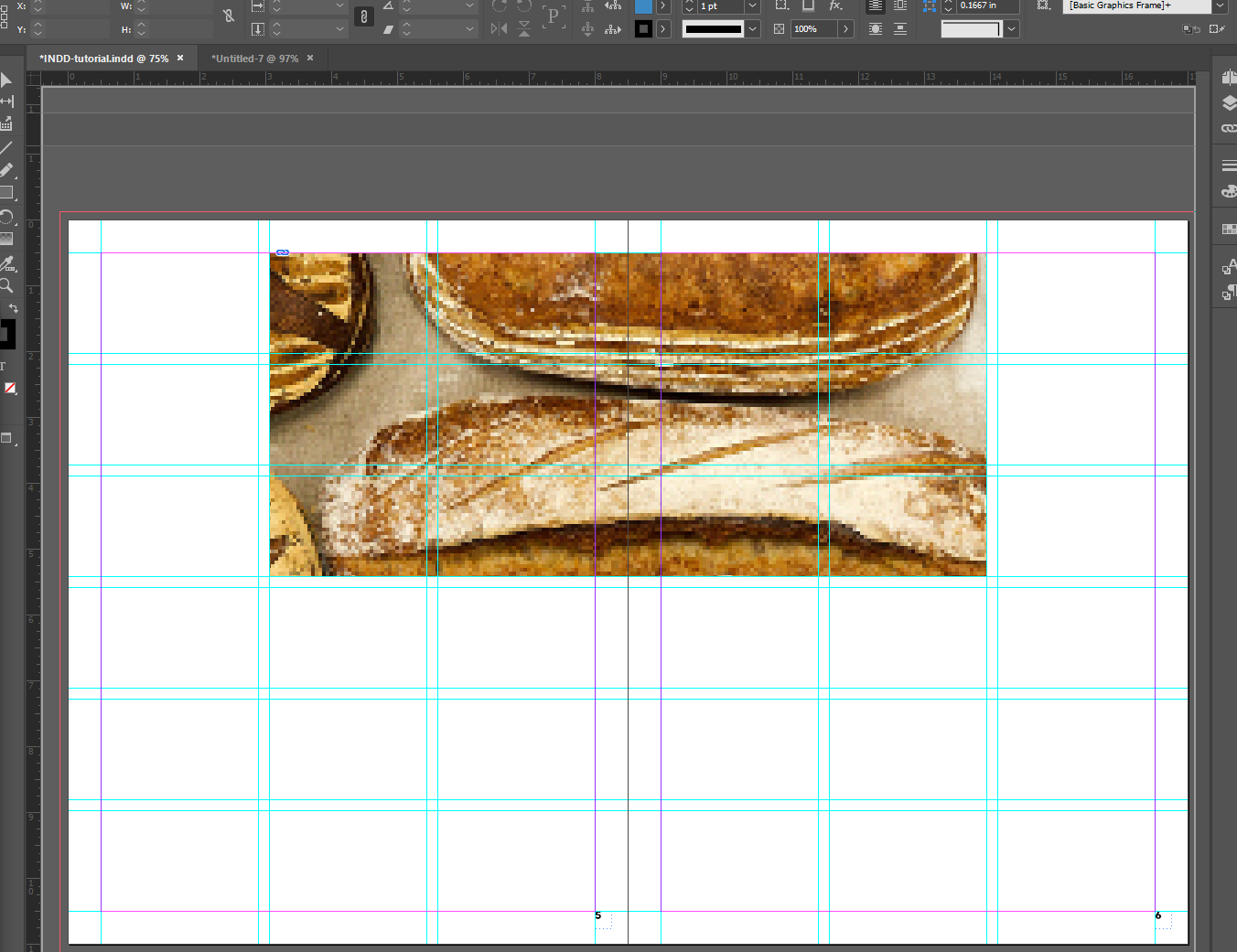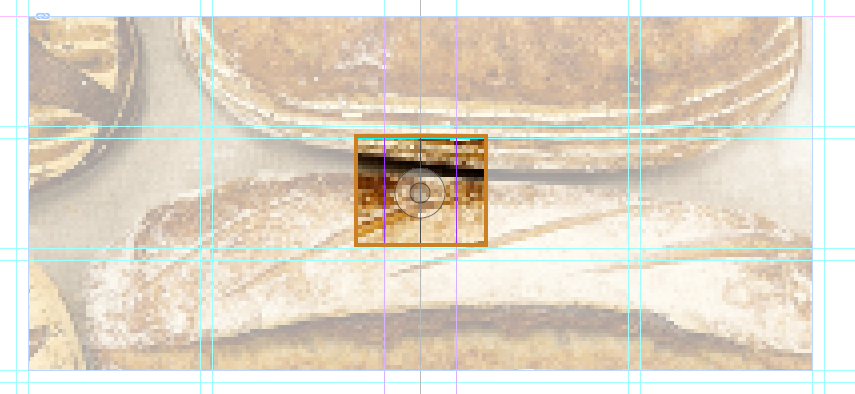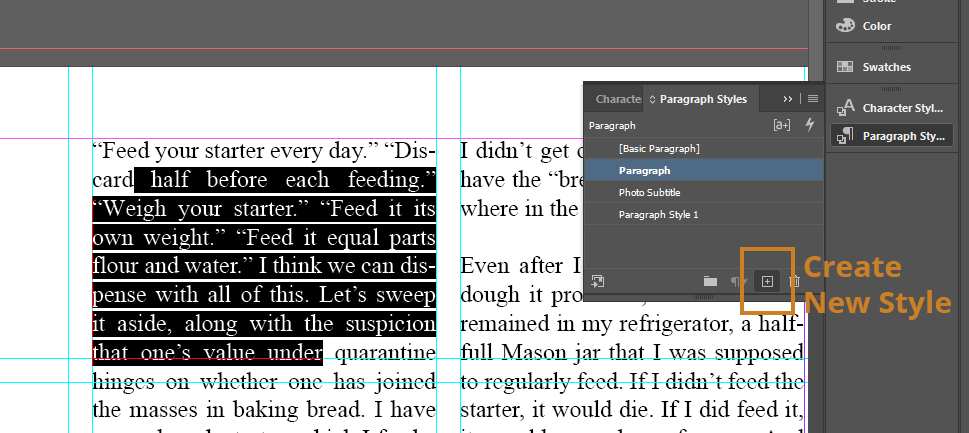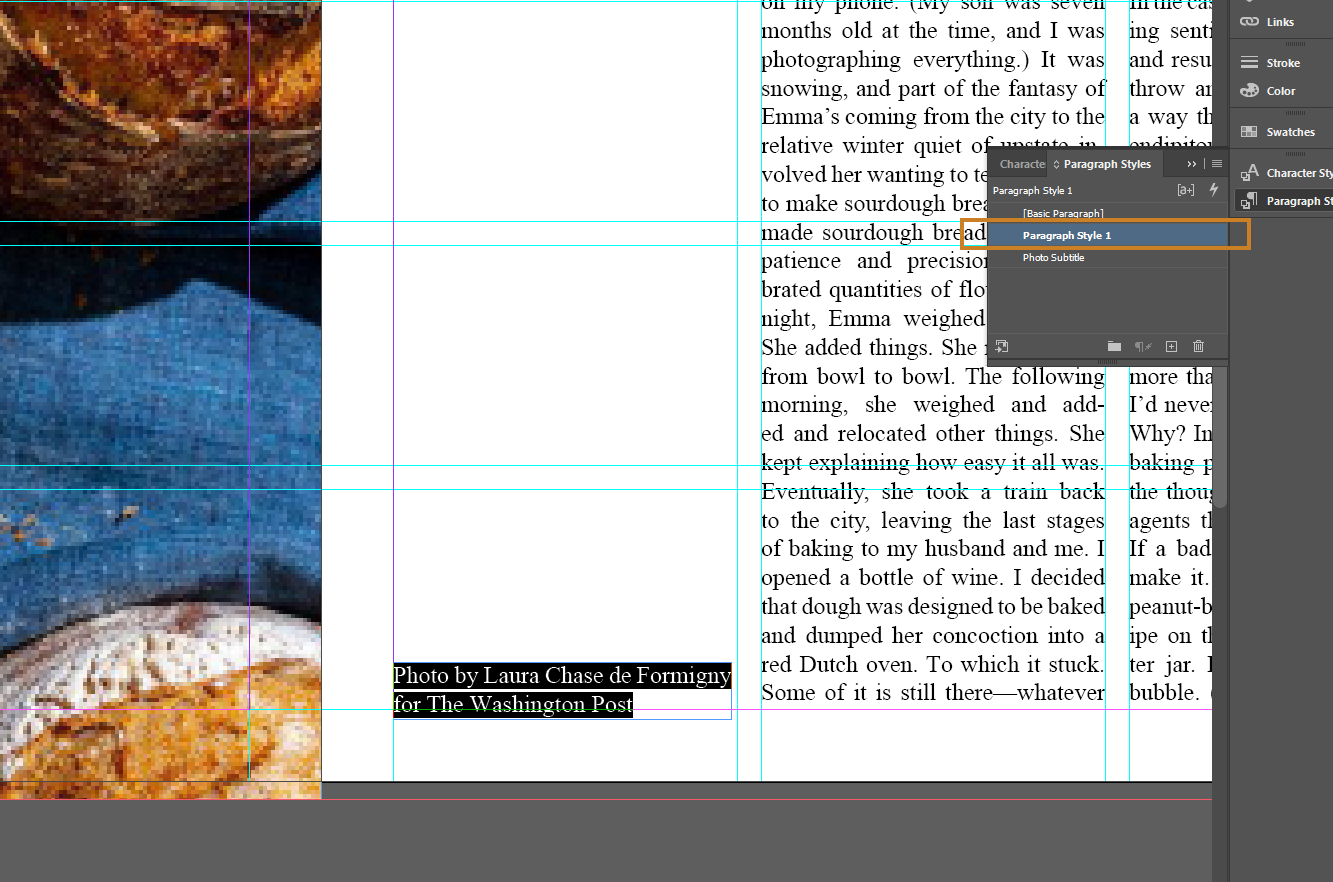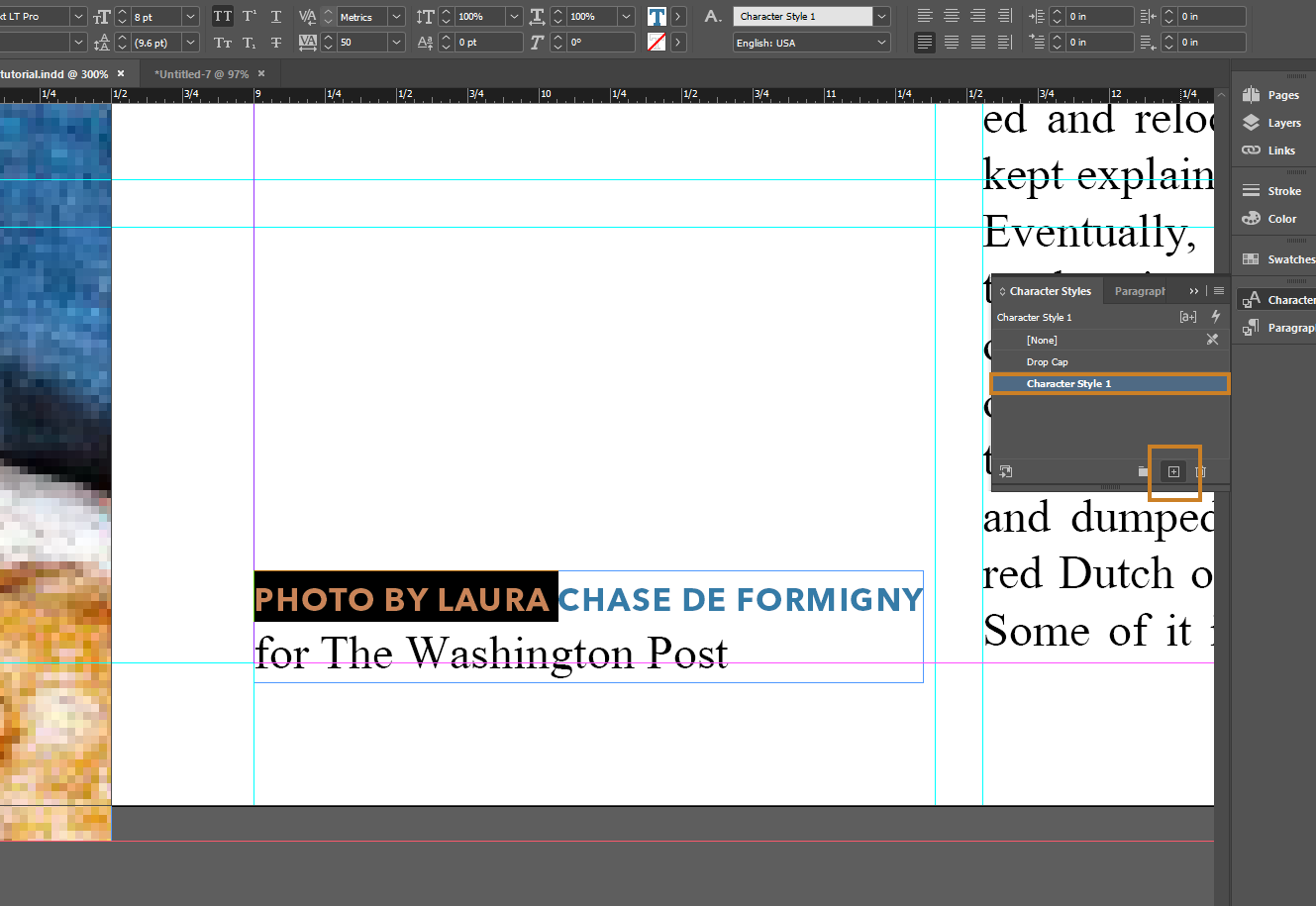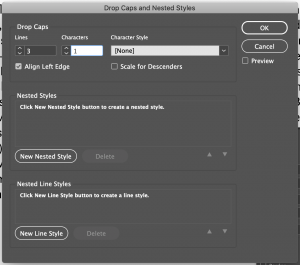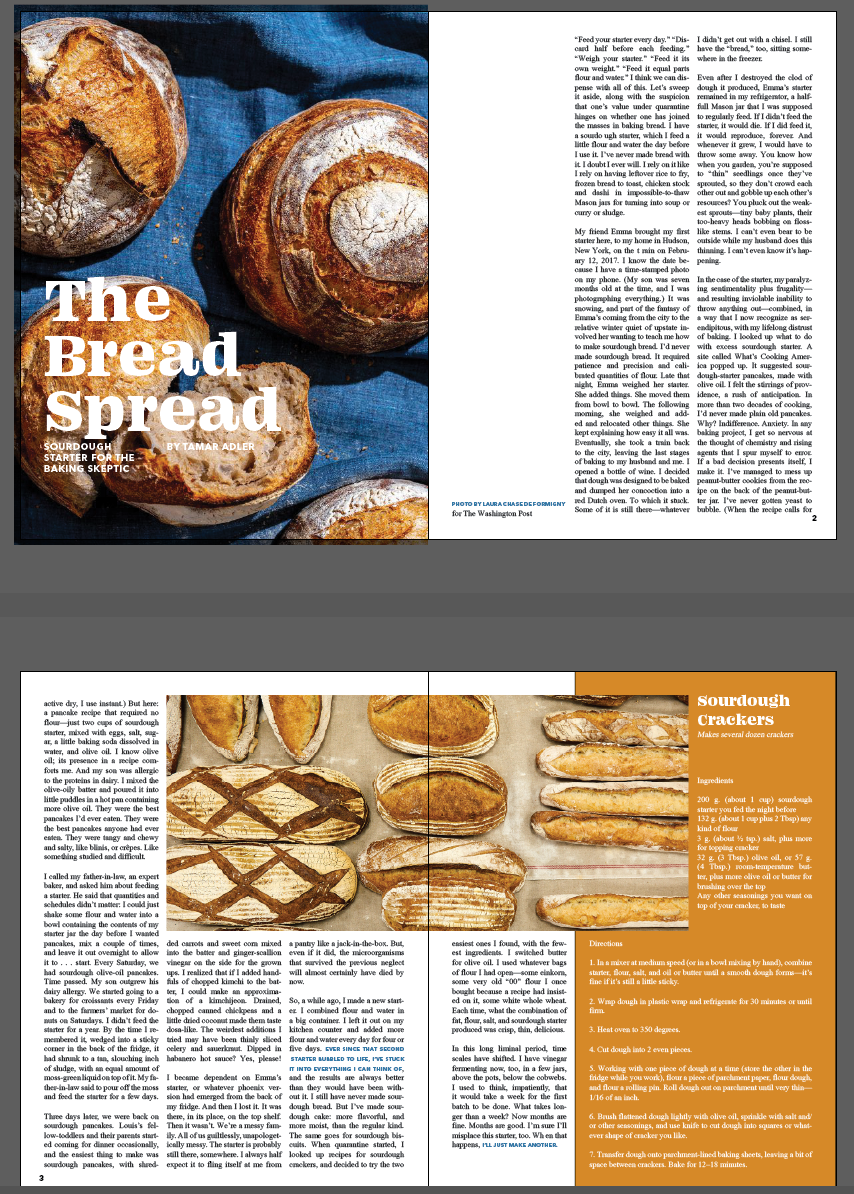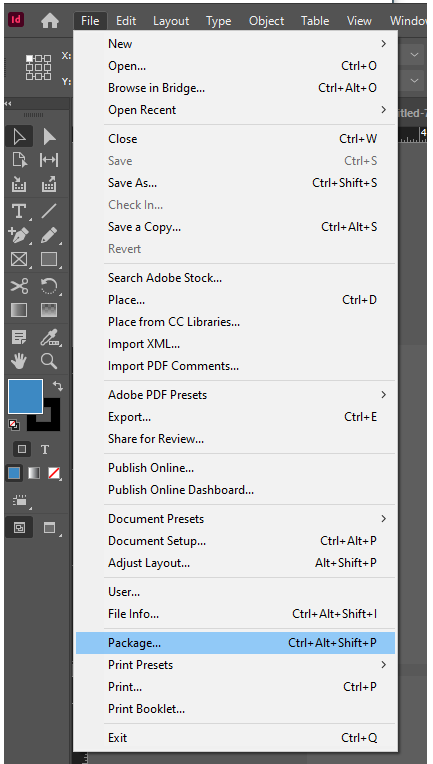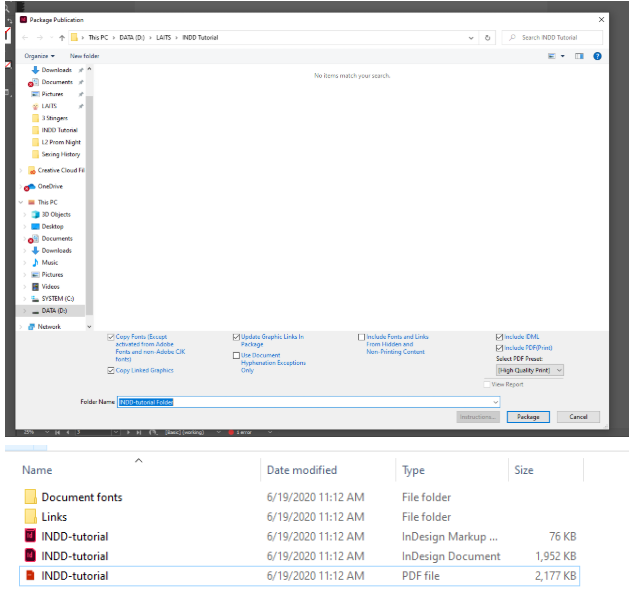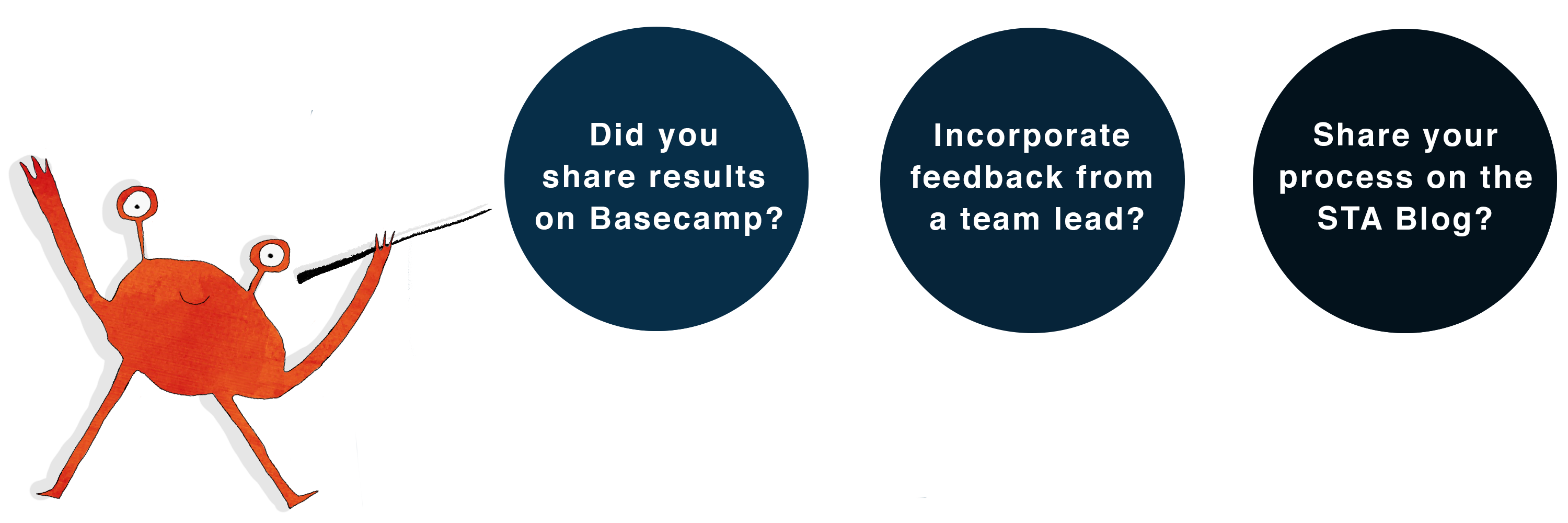InDesign is a powerful tool for typesetting (arranging type) and document creation. It is best for creating books, brochures, flyers, and magazines.
By the end of this training you will:
- Create a 4 page spread
- Use INDD’s master pages tool to create accurate and fast templates
- Learn best practices for typesetting
- Make your work more efficient using character and paragraph styles
- Learn how to package an InDesign file, fonts, and image into a folder
Let’s make a 4 page magazine spread in InDesign to grasp the basics.
Creating a document
1. Go to “File > New Document” and select these basic settings (# of columns is optional).
2. Then under detailed settings, choose these settings for your Margins, Bleed, and Slug. These are standard settings.
- Margins are the empty space on the side of your document. They give the text room to breathe.
- Bleed may be required if the document is going to print. It prevents anything placed at the edge of the document from misalignment while being printed or trimmed. However, do not count on anything in the bleed space showing up in the final.
- Slug is an extra space beyond bleed where you can leave special notes to the printer – it will also be trimmed off. Don’t worry about this unless specified by the printer.
3. Set your workspace to “Essentials Classic” for now, though your preference may eventually shift to another workspace set up. 
4. Right now your document has a cover page, but for this training we want to work on 2 sets of side-by-side pages, or spreads.
First, right click anywhere within the Pages panel and toggle “Allow Document Pages to Shuffle” OFF.
Then, right click > “Delete Spread” on the cover page. You will have three pages now, so add a fourth page with the “Create New Page” button. This process is helpful to know because not all documents will need a cover page, despite InDesign creating one by default.
Preparing your document
Grids, guides, and master templates are key to using InDesign to its full potential.
1. To start, double click the “A-Master” pages to enter master template editing mode. Anything you put on the page in this editing mode will appear on every page assigned A-Master template. It is possible to create multiple master templates.
2. Create a grid for your master template by going to “Layout > Create Guides…”
The grid you need will vary on your design, so feel free to choose your own settings here. If you aren’t sure what you want to design yet, it can help to Google “typesetting grids” and try to recreate one that inspires you. A good grid will spark creativity and answer design questions.
For this example, we’ve chosen 6 rows and 3 columns aligned to margins. Gutters are default .1667 inches.
Side note: If you are interested in typesetting grids, take a look at the famous unigrid system by world-renowned designer Massimo Vignelli – people spend their life collecting National Park Service documents that use the unigrid!
3. Add Page Numbers. Create a textbox with the Text tool (“T”). Then go to “Type > Insert Special Character > Markers > Current Page Number”.
An “A” will appear in your textbox. Place it where you like on your page – you can style the text now or later. Copy and paste it onto the other page.
*If you are placing page number in a corner, and not the center, remember this trick:
For the Left Page, align page number text to the right.
For the Right Page, align to the left.
4. Exit Master template edit mode by double clicking on one of your pages in the Pages panel. You will see your guides and page numbers are applied to each page!
Designing your Spreads
1 Your client will often provide the text and images to lay out. For this project, please download the assets from Box.
2. Begin to sketch how you may layout these assets in your grid.
These are our example assets:
1,200 word article: “Sourdough Starter for the Baking Skeptic” from The New Yorker, by Tamar Adler + 2 photos:

And this is a sketch of how to lay them out over 4 pages:
3. Use the Rectangle Frame Tool (“F”) to lay out where your images are going to go.
4. Place an image by dragging it into its proper Rectangle Frame you made.
This circle highlighted below allows you to toggle between editing the frame of the image and the placement of the image itself (think of it like a layer mask in Photoshop). Edit your photo until you like its size and framing. This tool just takes practice.
A note on placing images:
There are two ways to place images into InDesign: link (default) or embed.
- Linking: InDesign will use the file pathways on your computer to link to the image. This is helpful when you are still updating images in Photoshop or Illustrator because the changes will be reflected live in InDesign with each save. However, file links can easily be broken working computer to computer or moving files. When linking images you must save the file as a Package file.

- Embedding: If you know your images won’t need any more editing, you can embed them. These are stored within the document and can’t be “lost.” However, embedding will increase the file size.
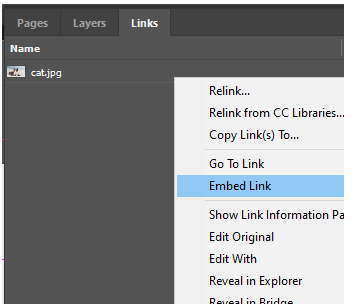
4. Input your text. Create a text box and paste in all of your article’s text. There will be a red “+” box on the text box, which means there is overset (overflowed) text. To carry the text over, create the next text box. Click the red “+” and click to where your next text box is. The text should spill into the next text box. Continue doing this until all your text is laid out.
This method may not always be necessary but it is helpful for long-form text layouts.
5. Text Styling. Aside from font, you can adjust width, tracking, underline styles, hyphenation… the list goes on. InDesign is a complex type editing software and there is a lot you can do. Unlike other Adobe softwares, the idea is that InDesign type tools are so robust you should never have to edit text by hand – there is always a setting or style button you can create instead. This just comes with getting to know the program, so it’s totally okay to not know every feature now. Try to use a new tool while styling your body text!
Here are just some of the many text editing options:
6. Create a Paragraph Style. Once you are happy with your text styling, create a Paragraph Style for it. Press “F11” (or “Window > Styles > Paragraph Styles”) to open the panel. Highlight your text and press “Create New Style.”
7. Add a caption. In a new text box write a caption near one of your photos describing the photo. Highlight the caption text and click on your new “Paragraph Style 1”. It will now have the same styling!
8. Create a Character Style. Sometimes you want certain words to pop, however if you use a new paragraph style it will restyle the whole paragraph. Character Styles are perfect for this situation because they are preset styles like Paragraph Styles, but can be applied on a micro-level.
Choose an important word or phrase in your text, and give it an eye catching styling. With this text still highlighted, open the Character Styles tab (Shift+F11) and press “Create New Style.”
Add your Character Style a few more places throughout your article to draw the reader’s attention.
Drop Caps:
Click into the first textbox of your copy before the first word, and click “Type” > “Paragraph”. In the paragraph window that appears, click the three-bar menu in the top right corner and select “Drop Caps and Nested Styles”. The “lines” category determines how many lines your letter(s) will take up, and the “character” category determines how many letters of your text will be drop-capped. Below is what 3 lines and 1 character looks like:
Tip: With the Color Theme Tool (“Ctrl+i”), click on a photo to get a custom color scheme based on the photo.
9. Check how your design is coming along by zooming out (Ctrl/Cmd++/-). Turn off grids (Ctrl/Cmd+;) and turn on Overprint Preview (View > Overprint Preview).
Continue editing until you are happy with the outcome. Consider styling subtitles, adding a drop cap design, or whatever you like.
Exporting your document
1. Go to “File > Package” and select “Package…”
Select “Package” again. This will create a folder which includes your .indd file, a PDF, as well as any linked photos and fonts. Packaging is necessary if you want to share your .indd with another designer, as they may not have the same images and fonts you do.
2 If all you need to do is export a final PDF to send to print, you can simply go to “File > Export…” and save as Adobe PDF > [High Quality Print].
Congrats! You’ve learned the basics of InDesign!


